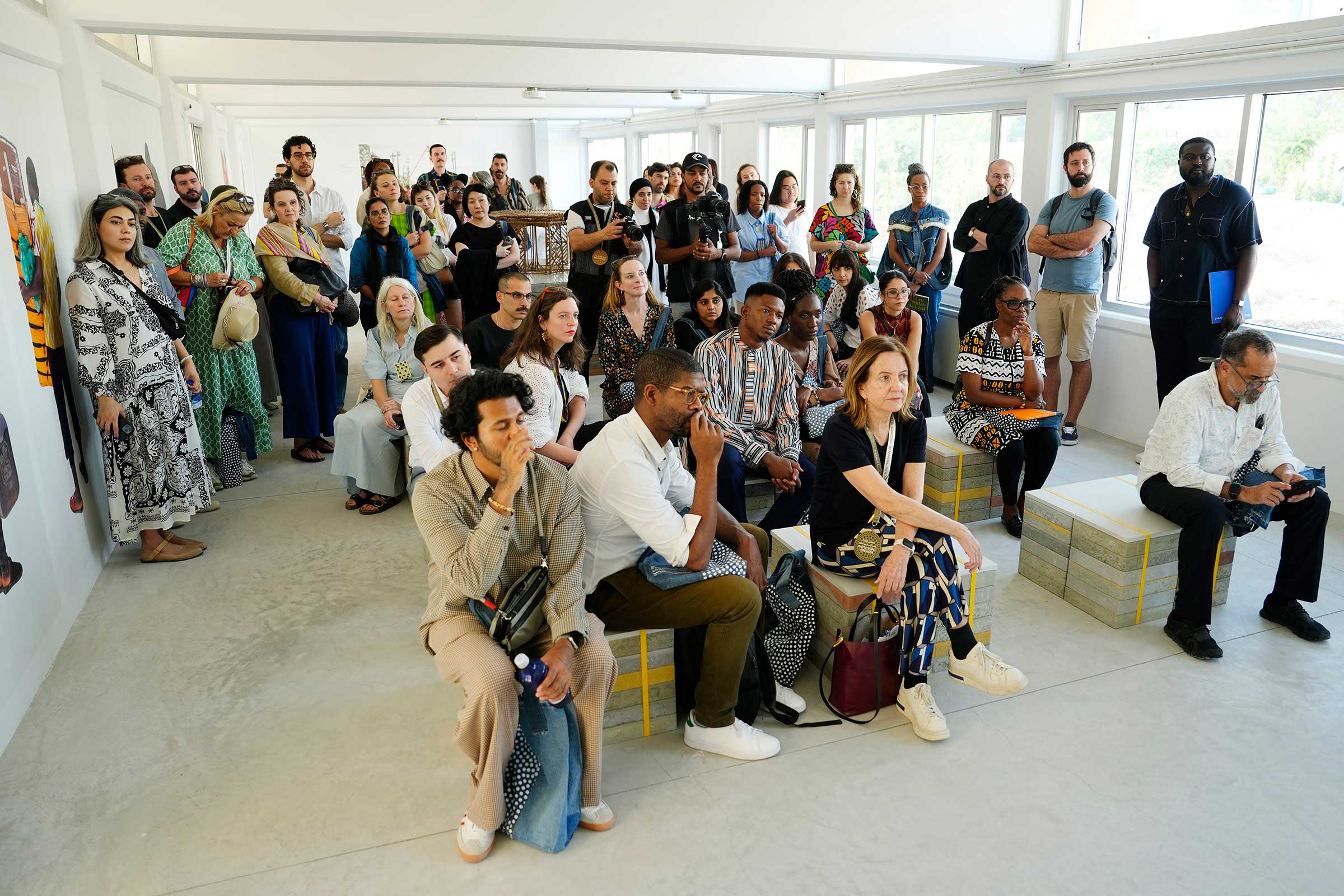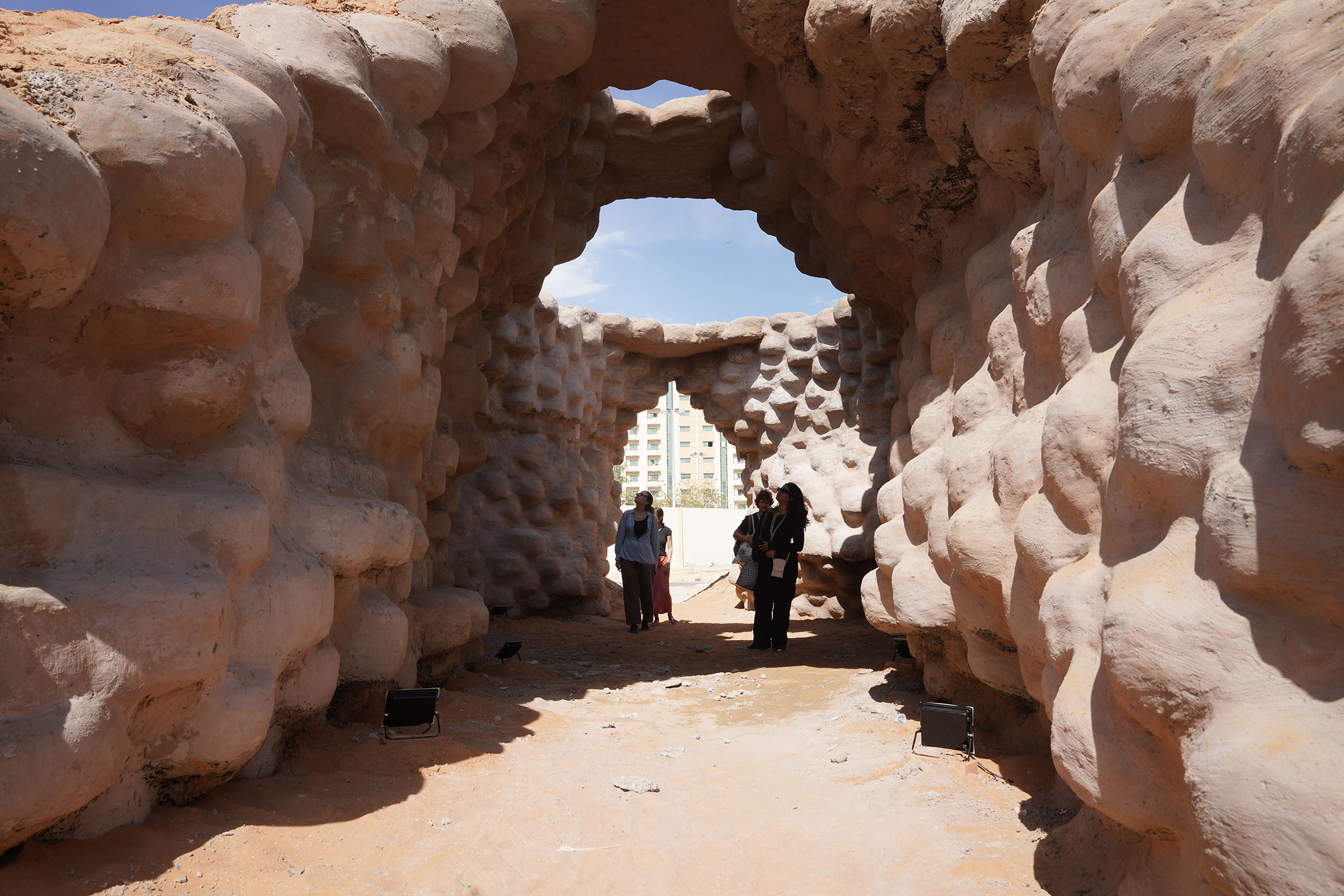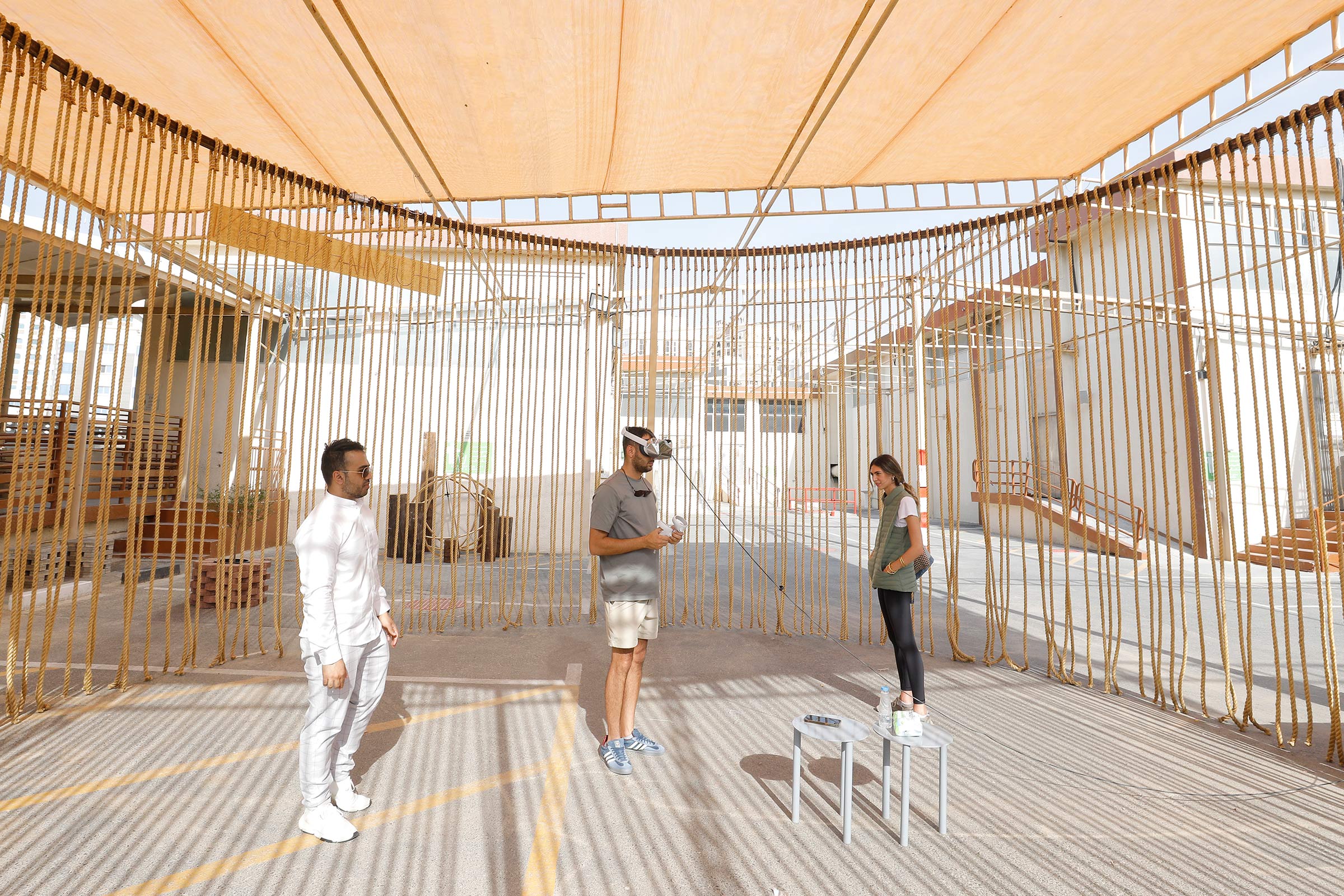
 Courtesy Sharjah Architecture Triennial
Courtesy Sharjah Architecture Triennial
2. Catching the Breeze, Following the Shade
The settings selected for the exhibition and associated events spoke to the Triennial’s themes of adaptive reuse, and a renewed appreciation of climate-responsive traditions.
Serving as the launch hub, the Al Qasimiyah School’s architectural form learns from the traditional connected courtyard. An oversailing roof, lifted at the edges to promote ventilation, shaded the main outdoor stage where delegates – including Lesley Lokko and Rahul Mehrotra – gathered for the plenary sessions.
This was just one of five destinations, with exhibits installed in repurposed buildings including the old Al Jubail vegetable market and slaughterhouse, Industrial Area 5, the Sharjah Mall, and Al Madam – a ‘ghost village’ on the desert outskirts of the city.
3. Convivial Conversations
Framed by Oshinowo’s three organising themes – Renewed Contextual, Extraction Politics, and Intangible Bodies – three panel discussions anchored debate.
These were pleasantly free of academic formality; each discussion was introduced by the Swahili word ‘Baraza’ to imply a conversation that speaks openly to human concerns.
Informal chats on the bus, alliances brokered in the departure lounge, at the outdoor cinema, and over lunch, captured an atmosphere of creative networking at the heart of an event that sought new correspondences in the architectural canon.
The speakers are too many to mention, but a few key voices capture the spirit of debate.
I was delighted to chair a session in which the incomparable Ola Uduku reminded us that history, with its feet on the ground, is only what we make it. Mpho Matisipa’s consummate capacity to listen, and to find the back door to a question many take for granted, led to insights regarding the premise of poetic and structural characteristics of ordinary dust.
This is both the Angolan dust that artist Sandra Poulson put to work in her installation at the Al Qasimiyah School, and the dust that inspired ‘dust mote’ reveries – orderly reflections towards a logic concerning the philosophical dimension of an architecture of scarcity, adaptation, and cultural value – delivered by legendary cultural theorist Hélène Frichot.
 Courtesy Sharjah Architecture Triennial
Courtesy Sharjah Architecture Triennial
4. An Artistic Medium
Much like the Venice Biennale, SAT prioritises artistic expression over explicitly architectural content.
Artistic vs architectural method dominates much debate about places today, but also significant is the prevalence of metaphor and transformation as themes that help us unpack the challenges of cultural adaptation and deterritorialization that we face.
Digital and poetic reconstruction of lost visions of our world provoked intense debate – Miriam Hillawi Abraham and Olalekan Jeyifous both brought us visceral visions of proxy imaginaries that would be impossible without their hybridised technical know-how.
Cave_bureau presented the ninth edition of their project, Anthropocene Museum, offering an alternative temporality into the space of SAT’s intellectual debate.
5. Triennial Temporality
Lesley Lokko’s keynote explored how events like SAT serve as a vehicle for the ongoing reconstruction of what we often refer to as the ‘architectural canon’.
A watershed in the recalibration of the canon, the Venice Biennale 2023 was brought into focus by Lokko’s conceptual framework that draws on ideas such as Achille Mbembe’s call for an ‘Afropolitan’ outlook.
Tosin Oshinowo’s curatorial provocation – her call to reuse, recycle and repair the history and theory of architecture, as well as its technological capacities – points to an ethos of unlearning our discipline, while auditing our capabilities and affiliations.
This is a constructive environment in which we give ourselves and each other permission to tear down the bastions of knowledge, while protecting the values and reputations of those who helped us become a creative community of generous thinkers and makers.
In the opening session, Lokko took a moment to remember Jonathan Hill. His untimely death serves as a reminder to treasure those thinkers and teachers who help us connect with our creativity.
Many commentators today herald the ‘Africa Moment’. Certainly, a real phenomenon, but emphasis on its ‘momentousness’ can downplay the real history that underpins not only the alliances at the heart of the networks clustering behind these events, but also the content itself.
The Beauty of Impermanence: An Architecture of Adaptability, in Sharjah closes in March 2024 – find out more.